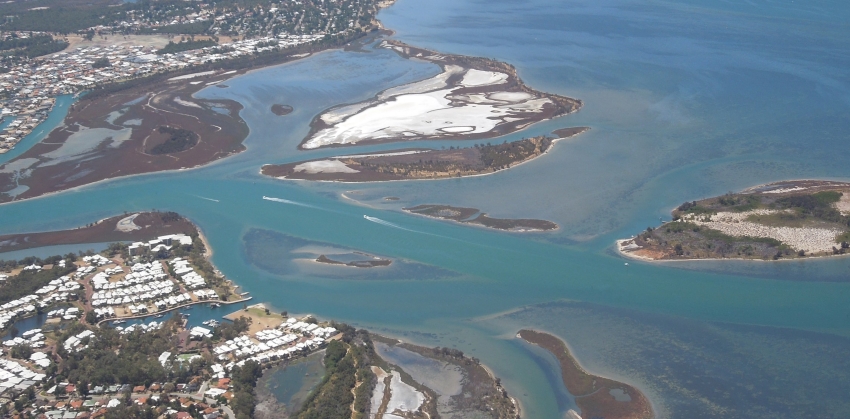About our estuaries
More than 80 per cent of Western Australia's population lives around our estuaries, making them one of our most valuable environmental, economic and recreational assets.
An estuary is defined as a semi-enclosed body of water where fresh water and sea water mix. This mixing zone can extend many kilometres inland from the coast.
Estuaries are influenced by the land and by the sea – with freshwater flow carrying sediments and nutrients, and tidal exchanges of seawater respectively. They are naturally dynamic environments. Estuaries are among the most fertile and productive environments in the world.
Their diverse range of physical habitats support a wide array of plants and animal communities by providing permanent habitat for many species, spawning grounds and nurseries for juveniles, dispersal corridors, and migratory stopovers for birdlife.
These water bodies have cultural and spiritual values, particularly for our Aboriginal population for whom these water bodies are nurturing, life-sustaining, sacred and integrally intertwined with their being.
Estuary health and management
While there are 166 estuaries in Western Australia, it is the estuaries in the south-west of the state that are the most heavily impacted by urban development, agriculture, industry and recreation.
In our state’s north, the Kimberley region features many of the estuaries which are tidal dominated. Along the arid Pilbara and subtropical west coast, the rivers rarely run to the sea and the river mouths are mostly marine.
Unfortunately, many of the 40 estuaries in south-west Western Australia are in poor or declining health.
Our estuaries are under stress from a combination of a drying climate with reduced rainfall and water flow, historical land use and altered drainage, intensified agriculture and a growing population and growing urbanisation. The most immediate and direct human impact is eutrophication, where the oversupply of nutrients causes an excessive growth of plants and algae, pushing the ecosystem out of balance.
The ability of our estuaries to absorb these pressures has reduced over time, as the cumulative impact increases. We now need careful and active management to ensure values are sustained whilst enabling economic development and liveability of our estuaries.
What we do
The Department of Water and Environmental Regulation monitors water quality in priority estuaries in south-west Western Australia and their catchments. We assess the condition of rivers across south-west WA through the Healthy Rivers program.
We work with partners to improve the health of our estuaries through programs like Healthy Estuaries WA, Revitalising Geographe Waterways and the Bindjareb Djilba (Peel-Harvey estuary) Protection Plan.
We also provide advice on other regional estuary systems outside of the greater South West.
For information on the Swan and Canning rivers and estuaries, visit the Swan Canning Riverpark webpages.
Healthy Estuaries WA
Healthy Estuaries WA is State Government program, building on the work of the Regional Estuaries Initiative (2016-20) and delivering core actions of Revitalising Geographe Waterways.
Launched in June 2020, Healthy Estuaries WA is focused on improving the health of the Peel-Harvey Estuary, Leschenault Estuary, Vasse-Geographe waterways, Hardy Inlet, Wilson Inlet, Torbay Inlet and Oyster Harbour.
The program includes work to reduce nutrient inputs from priority catchments, uses the latest science to monitor and effectively manage waterways, and continues to build collaboration between community, scientists, government and industry.
Read more on the Healthy Estuaries WA website.



